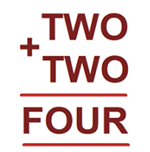Examples of what children should be able to do, in relation to each (boxed) Programme of Study statement
add and subtract whole numbers with more than 4 digits, including using formal written methods (columnar addition and subtraction)
Children should be able to use standard written methods for addition and subtraction,
e.g. calculate 14 136 + 3258 + 487 or 23 185 – 2078
Use written methods to find missing numbers in addition and subtraction calculations,
e.g. 6432 + □ = 8025
Use written methods to add and subtract numbers with different numbers of digits,
e.g. Find all the different totals that can be made using any three of these five numbers:
14 721, 76, 9534, 788, 6
add and subtract numbers mentally with increasingly large numbers
Children should be able to respond rapidly to oral or written questions, explaining the strategy used,
e.g. 750 take away 255, take 400 from 1360, 4500 minus 1050, subtract 3250 from 7600, 1800 less than 3300, 4000 less than 11 580
Derive quickly related facts,
e.g. 80 + 50 = 130, 130 – 50 = 80, 800 + 500 = 1300, 1300 – 800 = 500
Derive quickly number pairs that total 100 or pairs of multiples of 50 that total 1000,
e.g. 32 + 68 = 100 or 150 + 850 = 1000
Identify and use near doubles,
e.g. work out 28 + 26 = 54 by doubling 30 and subtracting first 2, then 4, or by doubling 26 and adding 2
Add or subtract the nearest multiple of 10, 100 or 1000 and adjust,
e.g. adding or subtracting 9, 19, 29 ... to/from any two-digit number
Work out mentally by counting up from a smaller to a larger number e.g. 8000 – 2785 is 5 + 10 + 200 + 5000 = 5215
Understand and use language associated with addition and subtraction, e.g. difference, sum, total
use rounding to check answers to calculations and determine, in the context of a problem, levels of accuracy
Children should be able to use rounding to approximate and check e.g. 2593 + 6278 must be more than 2500 + 6200, 2403 – 1998 is about 2400 – 2000
Write approximate answers to calculations, e.g. write an approximate answer for 516 ÷ (15 + 36)
solve addition and subtraction multi-step problems in contexts, deciding which operations and methods to use and why
Children should be able to choose the appropriate operations to solve multi-step problems, decide whether the calculations can be done mentally or using a written method and explain and record how the problem was solved using numbers, signs and symbols.
e.g. 13 502 people were at the match last week and there are 2483 more this week, how many more people need to attend to bring the total to the club’s target of 20 000 people?
Identify and obtain the necessary information to solve the problem and determine if there is any important information missing,
e.g. calculating total cost of a holiday for a family, given prices for adults and children and surcharges for particular resorts.
